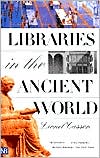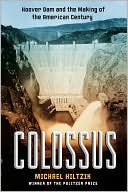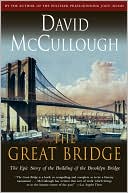Libraries in the Ancient World
This delightful book tells the story of ancient libraries from their very beginnings, when "books" were clay tablets and writing was a new phenomenon. Renowned classicist Lionel Casson takes us on a lively tour, from the royal libraries of the most ancient Near East, through the private and public libraries of Greece and Rome, down to the first Christian monastic libraries. To the founders of the first public libraries of the Greek world goes the credit for creating the prototype of today's...
Search in google:
In this paperbound reprint of a 2001 book, Casson (emeritus, classics, New York U.) chronicles the history of libraries from the storage of clay tablets in the ancient Near East to the Middle Ages. He examines the gathering of collections of writings, the means used to store them, the sponsorship of libraries by emperors and other notables, and the layout of library buildings. The text revolves around the period of the Roman Empire and the city of Rome. Annotation c. Book News, Inc., Portland, ORPreservation - Garry WillsAnyone interested in library architecture, procedures, or financing will find this book rewarding. So, in fact, will anyone just interested in books.
\ \ \ \ \ Chapter One\ The Beginnings\ The Ancient Near East\ \ \ \ It was in Egypt and Mesopotamia, lands abundantly watered by great rivers, that civilization arose. And it is there that we find the earliest examples of that key feature of civilization, writing: inscribed clay tablets that date shortly before 3000 B.C. have been discovered among the archaeological remains of the Sumerians, a gifted people settled in southern Mesopotamia.\ The Egyptians were not far behind, but we cannot follow the history of their writings nearly as well because they used a perishable writing material. In ancient times the banks of the Nile were lined with papyrus plants—the bulrushes of the "ark of bulrushes" in which the infant Moses was placed—and from the reeds the Egyptians made a form of paper; it was excellent in quality but, like any paper, fragile. Mesopotamia's rivers boasted no such useful reeds, but its land did provide good clay, and as a consequence the clay tablet became the standard material. Though clumsy and bulky it has a virtue dear to archaeologists: it is durable. Fire, for example, which is death to papyrus paper or other writing materials such as leather and wood, simply bakes it hard, thereby making it even more durable. So when a conqueror set a Mesopotamian palace ablaze, he helped ensure the survival of any clay tablets in it. Clay, moreover, is cheap, and fashioning it into tablets is easy, factors that helped the clay tablet become the preferred writing material not only throughout Mesopotamia but far outside it as well, in Syria, AsiaMinor, Persia, even for a while in Crete and Greece. Excavators have unearthed clay tablets in all these lands. In the Near East they remained in use for more than two and a half millennia, and in certain areas they lasted down to the beginning of the Christian Era until finally yielding, once and for all, to more convenient alternatives.\ The Sumerians perfected a style of writing suited to such a material. It consists basically of simple shapes, wedges, and lines, which could easily be incised in soft clay with a reed or wooden stylus; scholars have dubbed it cuneiform from the wedges (cunei in Latin) that are its hallmark. Although the ingredients are merely wedges and lines, the combinations of these to form signs standing for sounds or words number in the hundreds. Learning them required long training and much practice; inevitably, literacy was by and large limited to a small professional class, the scribes.\ The Akkadians conquered the Sumerians around the middle of the third millennium B.C., and they took over the various cuneiform signs used for writing Sumerian and gave them sound and word values that fit their own language. The Babylonians and Assyrians did the same, and so did peoples in Syria and Asia Minor. For the scribes of these non-Sumerian users of cuneiform, training was doubly demanding. The literature of the Sumerians was treasured throughout the Near East, and long after Sumerian ceased to be spoken, the Babylonians and Assyrians and others kept it alive, the way Europeans kept Latin alive after the fall of Rome. Their scribes, as a consequence, had to know the values of the various cuneiform signs for Sumerian as well as for their own language.\ The contents of the earliest clay tablets are simple notations of numbers of commodities—animals, jars, baskets, etc. Writing, it would appear, started as a primitive form of bookkeeping. Its use soon widened to document the multitudinous things and acts that are involved in daily life, from simple inventories of commodities to complicated governmental red tape.\ Archaeologists frequently find clay tablets in batches, sometimes batches big enough to number in the thousands. The batches consist for the most part of documents of the types just mentioned: bills, deliveries, receipts, inventories, loans, marriage contracts, divorce settlements, court judgments, and so on. These records of factual matters were kept in storage to be available for reference—they were, in effect, files, or, to use the term preferred by specialists in the ancient Near East, archives. Now and then these files include pieces of writing that are of a distinctly different order, writings that do not merely record some matter of fact but involve mental activity. They range from simple textbook material to creative literature—and they make an appearance very early. Near Nippur in southern Mesopotamia, for example, excavation brought to light a group of tablets, dating to the middle of the third millennium B.C., on which were inscribed lists of geographical names, lists of gods, lists of professions, writing exercises, a number of hymns. They could well be from a collection belonging to a school for scribes, perhaps one maintained by a temple, a collection of works that were kept handy for consultation—in other words, its library.\ Around 1980 archaeologists working at the site of ancient Ebla in Syria, thirty or so miles southwest of Aleppo, while digging out the remains of Ebla's royal palace, had a stroke of phenomenal good luck: they came upon its main archive room filled with some two thousand clay tablets that were on file there when, around 2300 or 2250 B.C., invaders set the palace on fire. The room was a rectangle roughly 3.5 x 4 m, and the tablets were found in heaps on the floor. Apparently they were kept on wooden shelves along the walls and, when the shelves burned through, the tablets fell down. The great majority were administrative records: almost a thousand pieces listed distributions of textiles and metals by the palace authorities, while another hundred or so had to do with cereals, olive oil, agricultural land, breeding of animals. But, along with these was a group of tablets whose contents were totally different. There were some sixty on which lists of words in Sumerian were inscribed—names of professions, of geographical locations, of birds, of fish. There were twenty-eight with bilingual lists, in Sumerian accompanied by translation into Eblaite. There were more than a dozen incantations, some in Sumerian and some in Eblaite. And there were two tablets—duplicates—with the text of a Sumerian myth. The excavators have determined that they must have come from a top shelf along one wall, the north wall of the room. The clear implication is that, shelved amid the palace records, was the working library of the palace scribes.\ Ebla's collection was small enough for users to consult by simply browsing through the shelf of tablets. As collections grew larger, this would at some point cease to be feasible. Modern libraries meet the problem by drawing up catalogues of their holdings—and so did the scribes of the ancient Near East. Among the tablets found at Nippur were two, dating to around 2000 B.C., both inscribed with a list of Sumerian works of literature—various myths, hymns, laments. One, slightly longer, has sixty-eight titles, the other sixty-two. They clearly have to do with one and the same collection because forty-three titles appear on both. The longer has twenty-five titles that are not on the shorter, which, in turn, has nineteen that the longer lacks. It could well be that the two lists arose because the scribes catalogued the collection involved—perhaps a batch of tablets in a given area—at two different times, the second time after a re-shuffling that removed a sizable number of works and replaced them with others.\ A catalogue, even so primitive a type as the one embodied in the Nippur tablets, a mere listing of titles in no consistent order, was a notable step toward systematizing a collection. Two further steps were improved cataloguing and the adding of identifying notes to tablets. Both of these steps had been taken by at least the thirteenth century B.C., as can be seen in finds from Hattusas.\ Hattusas is an ancient site, located two hundred miles or so southeast of Ankara, which was the capital of the empire of the Hittites from the seventeenth to the thirteenth century B.C. Here archaeologists uncovered a huge mass of tablets that came from the royal palace there. Inevitably most are of documentary type connected with governmental activity, but there are a good number that are not, ranging from prosaic handbooks to Hittite renderings of Sumerian and Babylonian epics. Some of these have, added after the end of the text on the back surface, several lines of writing that identify the work more or less the way a title page does today, the colophon, as it is called; the term is derived from the Greek word kolophon, "finishing touch," reflecting the ancient practice of providing as a "finishing touch" at the end what we provide through a title page at the beginning. Here are a few examples:\ \ \ Eighth tablet of the Dupaduparsa Festival, words of Silalluhi and Kuwatalla, the temple-priestess. Written by the hand of Lu, son of Nugissar, in the presence of Anuwanza, the overseer.\ Third tablet of Kuwatalla, the temple-priestess. Not the end. "When I treat a man according to the great ritual" [i.e., the first line used as title].\ Second tablet of Tudhaliyas, the great king, on the oath. End. This tablet was damaged; in the presence of Mahhuzi and Halwalu, I, Duda, restored it.\ \ \ Each colophon begins with the number of the tablet it is on. This was of vital importance, for, though the scribes wrote on both faces of a tablet, and often wrote very small, many works required more than one, even as works today require more than one page. But tablets, unlike pages, could not be bound; the best that could be done was to keep them together, either in stacks on top of each other or on edge alongside each other, both of which arrangements left ample opportunity for individual tablets to get misplaced or lost. The colophon often includes, as in the first example, the name of the local scribe who copied the text. The third example involves a tablet that had come from elsewhere and had suffered damage; it records the scribe who took care of making it usable.\ Not all tablets had colophons. Where they were present, they unquestionably were of great help to users of a collection: a glance at a colophon immediately revealed a tablet's contents and the part of the work it represented.\ A discovery at Hattusas reveals that catalogues had come into existence that were a great advance over the bare listings in those found at Nippur. The discovery was of a series of tablets, probably belonging to the thirteenth century B.C., that contained detailed bibliographical entries. Each entry begins by giving the number of tablets that made up the work being recorded, just as modern catalogues give the number of volumes in a multi-volume publication. Then the entry identifies the work itself by giving the title, which may take the form of citing its first line, or by giving a capsule description of the contents. Then it tells whether the tablet marked the end of the work or not. At times the entry includes the name of the author or authors, or adds other useful information. Here are some samples that illustrate the nature of the entries and their variety:\ \ \ Three tablets on the spring festival of the city of Hurma. How the presiding official celebrates the festival. First and second tablets missing.\ Single chapter. When the singer in the temple of the deity Inar breaks the offering bread he then recites as follows in Hattic. The end.\ One tablet. Words of Annana, the old woman. When one supplicates the Storm-God. Not the end.\ Single chapter. Words of Ammihama, Tulpija, and Mati, priests .... When in a cultic place in a temple that is pure one finds fraud, here is the ritual therefor. The end.\ One tablet on the fine oil of Azzari, the Hurrian woman doctor. When one leads the troops in battle against an enemy city and a charm using fine oil is put on the general who commands the army, one anoints the general, his horse together with his chariot, and all his battle gear. The end.\ One tablet, the end, on the purification of a murder. When the exorcist-priest treats a city for a murder. Words of Erija.\ Two tablets. When the king, queen, and princes give substitute- figures to the Sun-Goddess of the Earth. The end. However we have not found the first tablet belonging to it.\ Words of Ehal-Tessub .... When for a man his male and female slaves do not get along, or a man and a woman do not get along, or a man and a woman see bad dreams; how one carries out to Istar (?) the magic ceremony of the evil hatred.\ \ \ In addition to noting missing tablets, the entries now and then provide information about shelving. There is an entry, for example, which in listing a work that happens to be in two tablets notes that "they do not stand upright"; presumably, in the part of the palace holdings represented by this catalogue, most tablets were stored on edge while these two, exceptionally, lay flat.\ A good number of the works recorded in the entries have turned up in the unearthed mass of tablets. Some of these have colophons that are similar in wording to the entries—indeed, one colophon corresponds, word for word. Quite possibly the compilers of the catalogue, as they passed along the shelves, saved time by simply copying or paraphrasing colophons whenever they came across them.\ Practically all of the works listed in the catalogue have to do with religion: ceremonies for public occasions, rituals for a variety of circumstances from putting a protective charm on a general headed for combat to solving a domestic quarrel, interpretation of omens, and so on. Indeed, the subject matter is so consistently of this nature that the sudden appearance, right in the middle of a series of entries about rituals, of one listing a work on a treaty between the king of the Hittites and some local ruler may well reflect an ancient instance of mis-shelving! The holdings of the palace at Hattusas were, to be sure, far from being limited to such materials; they included myths, legends, historical annals. The catalogue, it would seem, was of one particular collection that, to judge from the contents, was for use by the palace clergy. It would have been an invaluable tool: any priest who needed a ritual for a given problem, instead of picking up tablet after tablet to read the colophon if there was one, or some lines of text if there was not, had only to run an eye over the entries in the catalogue. It was a limited tool: the order of the entries is more or less haphazard (alphabetization, for example, lay over a millennium and a half in the future) and they give no indication of location. But it was, no question about it, a significant step beyond the simple listing of titles of the Nippur tablets.\ The finds at Hattusas, in short, reveal the development of procedures for organizing a collection of writings. The palace holdings were certainly extensive enough to require them: the catalogue alone, representing, as we have seen, just the clergy's working library, lists well over one hundred titles. Now, modest collections of tablets were to be found throughout the Near East, for they were a natural result of the way scribes were trained. The key element was repeated copying of well-known works, so every master had on hand a collection of these to serve as models, and his students could build up collections of their own by simply keeping some of the copies they ceaselessly turned out. Scribes associated with temples by the same assiduous copying built up collections for their temples; the scholarly material served the scribes themselves and the religious, the temple priests. It was in this fashion and not by purchase that collections were put together, for a book trade does not seem to have existed in the Near East.\ On the other hand, a library the size of that at Hattusas was strictly a prerogative of kings, all-powerful figures who could create holdings en masse by plundering the collections in places they conquered or, when that recourse was not available, by sending out the palace scribes to copy whatever was desired. Which particular monarch was responsible for Hattusas' library or for any of the previous royal libraries, such as Ebla's, we do not know. It is not until the end of the twelfth century B.C. that we can finally cite the name of a founder of a library—Tiglath-Pileser I, one of Assyria's greatest rulers, whose reign lasted almost forty years, from 1115 to 1077 B.C.\ The proof was unearthed in the ruins of the temple of Assur, Assyria's chief god, at Ashur, the nation's religious capital. Excavators found in a certain area there numerous tablets that seemed to belong together: the writing is similar, the nature of the clay is similar, and a number of sure indications of date point to their having been assembled during the reign of Tiglath-Pileser I. It has been convincingly argued that they were part of a library that he created, possibly while he was still crown prince. Some one hundred different works can be ascribed with a fair degree of certainty to it, a number that surely represents only a part of what the holdings were in his day. As at Ebla and Hattusas, only a handful of these are purely literary; most are the professional writings that were the indispensable tools of scribes and priests. The biggest component were works dealing with omens, the determination from stars and other heavenly bodies, from sacrificial animals, natural events, and the like, of what lay in the future. The next biggest were standard handbooks—vocabulary lists, list of plants, trees, animals, gods, place names, a multiplication table, an astronomical text. There were some hymns—and even a catalogue of musical compositions, whose entries went so far as to include the instruments they were to be sung to, for example:\ \ \ 5 Sumerian psalms comprising one liturgy, for the adapa [probably a tambourine].\ Song to the reed flute in Sumerian.\ Three recitations to the pipe in Semitic.\ \ \ Thus, if scholarly inference is right, to Tiglath-Pileser I goes the credit for being the first founder of a library whom we know by name. It is, however, a later king of Assyria, Ashurbanipal, who, no question about it, was founder of a library. Moreover, what he founded "has every right to be called the first systematically collected library in the ancient Near East." In size it was many times greater than any before and was not to be surpassed for the next three and a half centuries.\ Ashurbanipal, Assyria's last important ruler and one of its most noted, held the throne for well-nigh half a century, from 668 to 627 B.C. He was himself literate: he boasted not only that he achieved "the highest level in the scribal art" but that "among the kings, my forerunners, none had learned such an art." During the latter half of the nineteenth century, British archaeologists working at Nineveh, the royal seat of Ashurbanipal and his predecessors, came upon a vast quantity of tablets in the ruins of two of his palaces. The find turned out to be a treasure trove: it has provided, over and above hundreds of examples of the various types of professional writings, the texts of the Epic of Gilgamesh, the Epic of Creation, and most of the other noted works of ancient Near Eastern literature that we possess today. Colophons provide the link to Ashurbanipal. Some read baldly: "Palace of Ashurbanipal, King of the World, king of Assyria." Others are long and detailed:\ \ \ Palace of Ashurbanipal, King of the World, King of Assyria, who trusts in Ashur and Ninlil, whom Nabu and Tashmetu gave wide-open ears and who was given profound insight.... The wisdom of Nabu, the signs of writing, as many as have been devised, I wrote on tablets, I arranged [the tablets] in series, I collated [them], and for my royal contemplation and recital I placed them in my palace.\ \ \ The library was founded for the "royal contemplation." It was, in other words, the king's private collection, one he could exploit personally since he had mastered what normally was limited to professional scribes, the ability to handle the "signs of writing," that is, to read and write cuneiform.\ In the mass of tablets unearthed at Nineveh there were, as usual, archival documents mingled with library material. The library material shows more or less the same mix as in Tiglath-Pileser's holdings. By far the largest component were omen texts. The next largest was the technical literature of religion and magic—rituals, incantations, prayers, and the like, for warding off evil or calling for divine aid. The next largest were scholarly texts—lists of cuneiform signs with their readings, lists of words and names, dictionaries for translating from Sumerian into Akkadian. The tablets bearing literary works such as the Epic of Gilgamesh, so prized today, were but a handful in comparison. It has been estimated that Ashurbanipal's library contained about 1,500 titles; since many existed in multiple copies, in some cases up to six, the total number of tablets was much greater.\ How did Ashurbanipal gather his collection? In 648 B.C. the successful completion of a war against his half-brother who was ruler of Babylon gave him free rein over affairs in that great cultural capital. He helped himself to tablets in the temples there, loaded them into carts, brought them to Nineveh, put them in with his other holdings, and, on top of that, had copies made of them. He took tablets from Tiglath-Pileser's library in Ashur. And he took tablets from private collections. We learn this from an unusual discovery, fragments of the record of a large accession made, as can be deduced from certain chronological clues, between January and March 647 B.C. The entries, though many are lost or incomplete, supply invaluable information. A number of them, for example, state the source of the acquisitions, as in the following instances:\ \ \ 2 [i.e., tablets] lamentations.\ 1 [i.e., tablet] The Dream Book.\ In all, 125 tablets [i.e., including\ 122 listed in previous, lost, lines].\ Arrabu, an exorcist from Nippur.\ \ \ 1 one-column tablet,\ Anti-witchcraft.\ Musezib-Nabu, son of Nabu-sum-iskun,\ scribe of the King of Babylon.\ \ \ The tablets listed in these entries must have come from the personal collections of the men named; similar entries show other such collections being tapped. Ashurbanipal's agents probably confiscated the tablets involved or put in a royal "request" for them. It looks as if owners turned over writings that were not directly connected with their profession and hence more easily dispensed with. Arrabu, for example, an exorcist, gave up a work on the interpretation of dreams rather than, say, something on driving out demons, and Musezib-Nabu, son of a scribe and presumably one himself, gave up a work on witchcraft rather than a vocabulary list or the like.\ The new accessions, estimated at around 2,000 tablets and 300 wooden boards, represented a significant acquisition (and the inclusion of boards is a reminder that Near Eastern collections contained works on this form of writing material as well as clay tablets, and that whatever was on them has been lost). The date, early 647 B.C., was right after Ashurbanipal's victory in the war that gave him control of Babylon; this sizable addition could well have been part of the plunder.\ Although the library was for Ashurbanipal's use, certain others—his personal secretaries, for example—must have had access. This led to trouble, judging from the following colophon:\ \ \ Clay tablet of Ashurbanipal, King of the World, King of Assyria, who trusts in Ashur and Ninlil. Your lordship is without equal, Ashur, King of the Gods! Whoever removes [the tablet], writes his name in place of my name, may Ashur and Ninlil, angered and grim, cast him down, erase his name, his seed, in the land.\ (Continues...)
PrefaceMaps1The Beginnings: The Ancient Near East12The Beginnings: Greece173The Library of Alexandria314The Growth of Libraries485The Beginnings: Rome616Libraries of the Roman Empire: The City of Rome807Libraries of the Roman Empire: Outside the City of Rome1098From Roll to Codex1249Toward the Middle Ages136Abbreviations147Notes149List of Illustrations167Index171
\ Garry WillsAnyone interested in library architecture, procedures, or financing will find this book rewarding. So, in fact, will anyone just interested in books. \ —Preservation\ \ \ \ \ Virginia Quarterly ReviewThis wonderful book. . .considers from a most apt vantage point the nature of education and culture.\ \ \ Publishers WeeklyThis, according to the author (Travel in the Ancient World; etc.), "is the first full-scale study of libraries in the ancient world." This alone will make the book very attractive to a readership well beyond those with professional interests in the ancient world. And yet the book's title sells its contents short since it is really about a great deal more than the curatorship of the written word through its very specialized beginnings in the Near East c. 3000 B. C. until the collapse of cities in the Western Roman world. Casson's book is not limited to where and when important libraries existed; it offers a social history transcending the idea of a library as we know it. Casson discusses literacy in the ancient world; the techniques of production and the materials from which books were made (clay tablets in the oldest repositories in the Near East; papyrus and parchment in the West); trade in books; the centrality of libraries as the predecessors of modern universities and research institutions; the organization of Greco-Roman libraries, which continues, necessarily modified, in today's libraries; the differences and intersections among royal, private and public libraries; the kinds of books favored by libraries and even observations on the concept of the rare book in antiquity. Detailed consideration of the architectural elements of ancient libraries (what did these libraries look like? Where and how were books stored? How were reading rooms arranged?) makes the book as appealing to the archeologist as the bibliophile. (Apr.) Copyright 2001 Cahners Business Information.\ \ \ \ \ Library JournalTo find an English-language work comparable to this one in content, size, and scope, one has to go all the way back to James Westfall Thompson's 1940 Ancient Libraries (Univ. of California. o.p.). Casson, a professor emeritus of classics at New York University and author of numerous books on ancient history, provides an overview of the development of libraries (and, to some extent, of writing, literacy, bookselling, and archives), starting with Egypt and Mesopotamia in the third millennium B.C.E. and continuing through the periods of the political and cultural predominance of Greece and then Rome, ending around the fifth century C.E. Among the libraries featured are those of Ashurbanipal in Nineveh, Alexandria, Pergamum, and the Forum of Trajan in Rome. Numerous other specific royal, temple, private, and public libraries are also mentioned. Drawing upon the scholarship of the last several decades, Casson describes, wherever possible, the acquisition, format, cataloging, arrangement, subjects, and use of the library materials and the staffing, architecture, and size of the libraries. He makes clear when the archaeological or literary evidence is scant or lacking. General readers will find this book informative and engaging. Scholars will also be interested in the 18 pages of notes at the end. Libraries in the Ancient World now supersedes Ancient Libraries and should be in library science and ancient history collections in public and academic libraries.--Thomas F. O'Connor, Manhattan Coll. Libs., Bronx, NY Copyright 2001 Cahners Business Information.\ \ \ \ \ BooknewsIn this paperbound reprint of a 2001 book, Casson (emeritus, classics, New York U.) chronicles the history of libraries from the storage of clay tablets in the ancient Near East to the Middle Ages. He examines the gathering of collections of writings, the means used to store them, the sponsorship of libraries by emperors and other notables, and the layout of library buildings. The text revolves around the period of the Roman Empire and the city of Rome. Annotation c. Book News, Inc., Portland, OR (booknews.com)\ \








